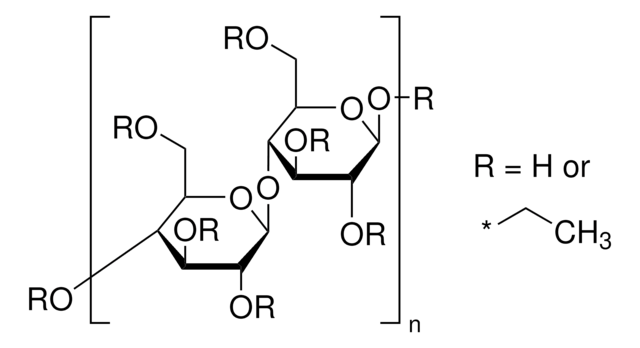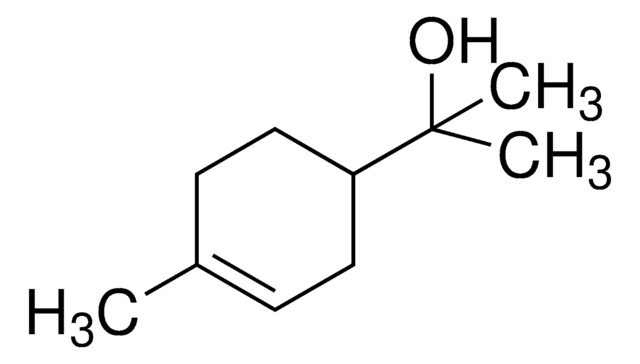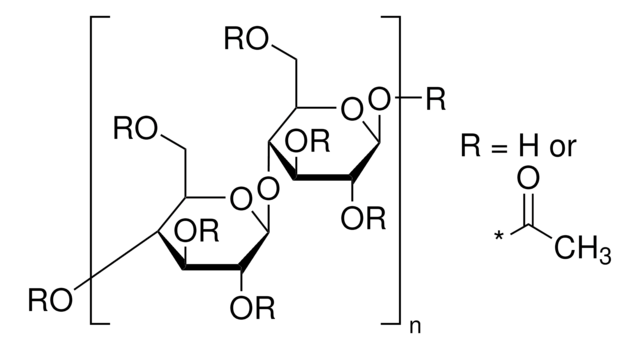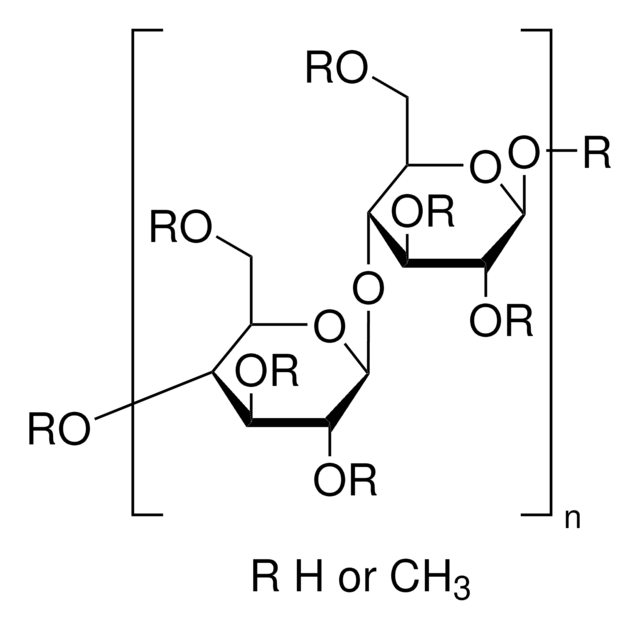200654
Ethyl cellulose
viscosity 300 cP, 5 % in toluene/ethanol 80:20(lit.), extent of labeling: 48% ethoxyl
Sinónimos:
Ethylcellulose
Iniciar sesiónpara Ver la Fijación de precios por contrato y de la organización
About This Item
Productos recomendados
Formulario
granular
Nivel de calidad
temp. de autoignición
698 °F
concentración
48.0-49.5%
Extensión del etiquetado
48% ethoxyl
índice de refracción
n20/D 1.47 (lit.)
viscosidad
300 cP, 5 % in toluene/ethanol 80:20(lit.)
temperatura de transición
softening point 157 °C
densidad
1.14 g/mL at 25 °C (lit.)
¿Está buscando productos similares? Visita Guía de comparación de productos
Categorías relacionadas
Descripción general
Ethyl cellulose (EC) is a non-toxic, biocompatible, and hydrophobic polymer used for the sustained release preparation of pharmaceutical products.
Aplicación
Ethyl cellulose can be used to prepare polymer coatings for various applications. For example, it is used to encapsulate salt hydrates for low-temperature heat storage applications.
It can be used as an efficient carrier for multiparticulate sustained drug delivery. For example, it can be used to develop polymeric microspheres for the controlled release of Ivabradine HCL (IBH).
It can be used as an efficient carrier for multiparticulate sustained drug delivery. For example, it can be used to develop polymeric microspheres for the controlled release of Ivabradine HCL (IBH).
Código de clase de almacenamiento
11 - Combustible Solids
Clase de riesgo para el agua (WGK)
WGK 1
Punto de inflamabilidad (°F)
Not applicable
Punto de inflamabilidad (°C)
Not applicable
Equipo de protección personal
Eyeshields, Gloves, type N95 (US)
Elija entre una de las versiones más recientes:
¿Ya tiene este producto?
Encuentre la documentación para los productos que ha comprado recientemente en la Biblioteca de documentos.
Los clientes también vieron
N Suwannateep et al.
European journal of pharmaceutics and biopharmaceutics : official journal of Arbeitsgemeinschaft fur Pharmazeutische Verfahrenstechnik e.V, 82(3), 485-490 (2012-09-08)
The phytochemical curcumin possesses antioxidant activity; however, it becomes unstable after being exposed to light or heat or loses activity during storage. This is especially important when curcumin is applied to the skin within a cosmetic or pharmaceutical formulation, since
Syed Umer Jan et al.
Pakistan journal of pharmaceutical sciences, 25(4), 751-756 (2012-09-27)
The aim and objective of the present study was to formulate and evaluate controlled release polymeric tablets of ibuprofen with determinations of formulation factors using various grades and types of polymer ethocel i.e. ethocel standard 10P; 10FP, 100P and100FP for
Daniela Traini et al.
International journal of pharmaceutics, 438(1-2), 150-159 (2012-09-12)
The potential of excipient coating to enhance aerosol performance of micronized drugs in carrier excipient-drug blends, used in dry powder inhalers, was investigated. Both EC (ethyl cellulose) and PVP (polyvinylpyrrolidone) were used as coating agents. Carriers were prepared via sieve
Ghulam Murtaza
Acta poloniae pharmaceutica, 69(1), 11-22 (2012-05-12)
Ethylcellulose (EC) based microencapsulated drug delivery systems are being extensively studied throughout the world for achieving extended drug release and protecting the core substance from degradation. The in vitro evaluation of EC microcapsules have elucidated that their particle characteristics are
Ritesh M Pabari et al.
Expert opinion on drug delivery, 9(12), 1463-1474 (2012-10-16)
To examine the potential of a novel 3-fluid nozzle spray drying technology to formulate differentiated layered microparticles (MPs) of diclofenac sodium (DFS)/ethyl cellulose (EC). DFS/EC MPs were formulated using the inner and/or outer nozzles of a novel 3-fluid nozzle and
Nuestro equipo de científicos tiene experiencia en todas las áreas de investigación: Ciencias de la vida, Ciencia de los materiales, Síntesis química, Cromatografía, Analítica y muchas otras.
Póngase en contacto con el Servicio técnico




